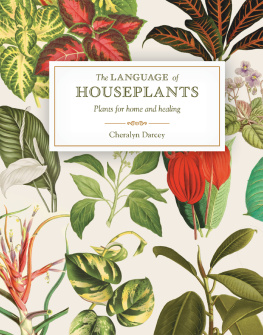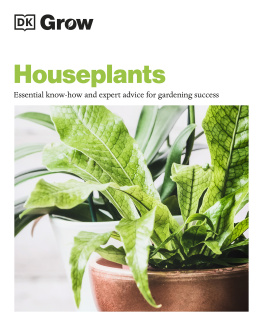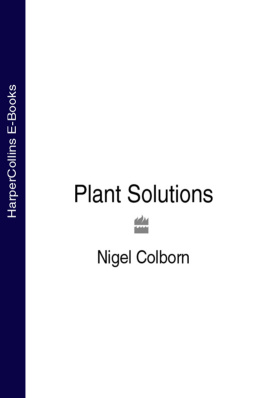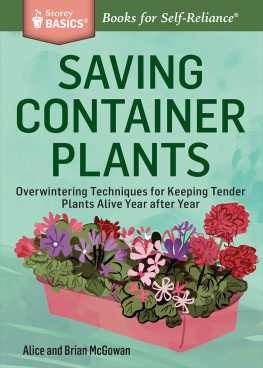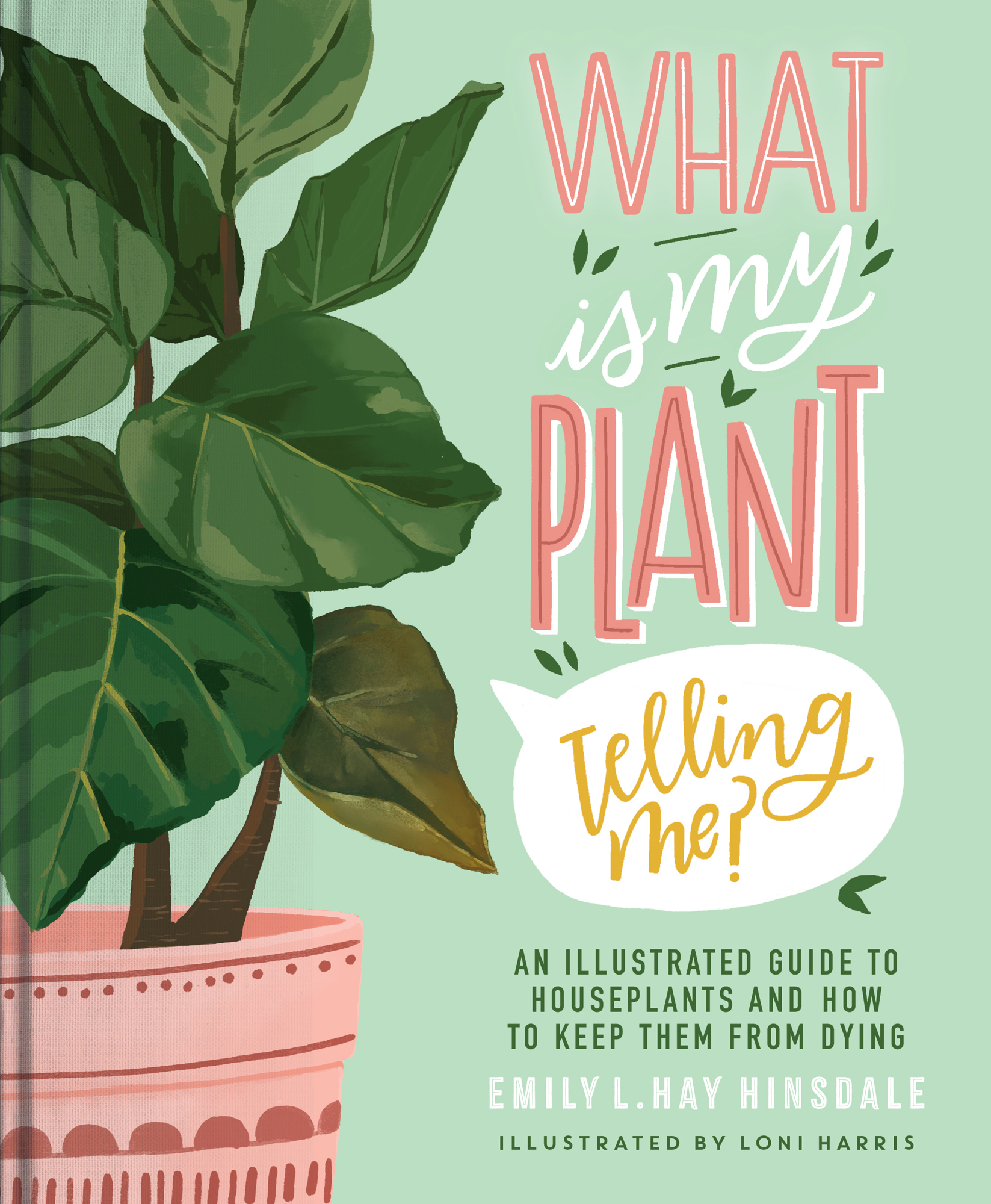Contents
Guide
What Is My Plant Telling Me?
An Illustrated Guide to Houseplants and How to Keep Them from Dying
Emily L. Hay Hinsdale
Illustrated by Loni Harris
For my roots: Mom, Dad, and Andy
I NTRODUCTION
Remember that special day you brought home your new houseplant? Full of optimism and enthusiasm for your precious new member of the family, you showered it with love and plenty of water. You watched each new leaf unfurl, admired its glossy foliage or its brilliant blooms, posted daily plant reports on every social media platform you could find, and bragged to your friends about how your plant is the most remarkable plant of them all.
And then one day, you came home to find yellow leaves. Yellow leaves! What happened?! You gave this plant every possible advantage and here it is drooping around the house like its not even trying.
Whats a devoted plant parent to do?
Dont panic. And stop crying into your cactus; they dont like that much moisture anyway. Lets work the problem. Less pathos, more pothos.
The steps toward bringing your green buddy back to health are usually straightforward and doable. While your list of basic needs is extensive (pizza, coffee, Netflix, yoga pants, wine, chocolate, tacos, etc.), plant needs are simple: water, light, soil. Align those needs for your particular plant in your particular home and you two can grow together in harmony.
Fortunately for you, plantsunlike your exare good communicators. Most of the time, they will give out a few key signals when theyre less than satisfied with your current relationship.
Dont speak plant? Thats why were here, ready to brush up your bromeliad, dust off your dracaena, and increase your fern fluency. Each type of plant will have specific signals for specific concerns, so its important to study up on your own houseplant. However, there are a few introductory phrases that will help you establish a basis of communication to get started. Repeat after us: water, light, soil.
WATER
Like you, your plant is largely made up of water. Also like you, too little water will parch it and too much water will drown it.
Improper watering is at the root of most plant disasters. Underwatering deprives your plant of the wet stuff it so needs to keep from drying out. The soil will dehydrate, making it more difficult to get it to absorb moisture when you do finally water again. The plant will droop and brown. Overwatering, however, is the more frequent cause of plant disasters. Anxious plant parents will apply the H2O aggressively and constantly until their poor plant is bogged down in a muddy mess of soil. Good for tadpoles, bad for plants. In all that wet, roots rot, spreading up into yellow leaves, soft and flabby stems, and eventually a dead plant.
A general rule of thumb for plant watering schedulesstick that thumb in the soil. Wet? Dont water. Damp? Excellent. Dry? Water, please.
When it is time to water, pour it on heavily enough for water to flow freely through the soil and out the drainage holes. This will ensure that your plant is wet, the soil is wet, and the excess water has washed away any soil or fertilizer impurities.
Knowing how frequently to water does depend on your type of plant. Some, like succulents and cacti, prefer to have their soil dry out completely before being watered again. Others, like ferns and figs, need to have their soil stay moist at all times.
Some plantsand some locationswill also need some attention to moisture in the air. Many indoor houseplants hail originally from tropical climes and are therefore used to steamy air and sultry breezes. This is easy to provide if youre houseplanting in Florida, less so if you hang out in Colorado. Misting the air around the plant can help but can be a bit of a chore, and some plants dont like wetness on their leaves. The reliable trick employed by serious indoor gardeners is also the easiest. Place a tray of pebbles under or near your plant. Get those pebbles wetnot sitting in a pool of water, just wetand they will evaporate damper air around your plant.
For all plants, drainage is criticala pot without holes in the bottom will unavoidably have a soggy bottom. If your pot overflows into a saucer, dump extra water out of the saucer for the same reason. If your teacup overflows into the saucer, surreptitiously dump the extra tea into a nearby houseplant. Manners.
LIGHT
All those useful labels pasted to plant pots at the plant store say things like bright indirect light or low light. Say what?
Heres a general guide, though it may involve a lot of time sitting and staring at a window.
Low light: less than 4 hours of sun
Medium light: 4 to 6 hours of sun
Bright light: more than 6 hours of sun
Identify the light sources in your home. This means find the windows. Which direction do the windows face? Break out that compass (we bet theres one on your cell phone). South-facing windows get more intense light, or direct light. North-facing windows get less intense light, or indirect light. If the window is otherwise unobstructed, the light can still be bright while also being indirect. East- and west-facing windows tend to get medium light. What is medium light? you ask. Stand by your east/west windows. Its that. (Its indirect light.)
What kind of view do you enjoy? If youre looking out at shady trees (yay!) or the wall of another building (sigh), this window probably doesnt get a huge amount of bright sun. This means its low light.
A couple of other light tips. Rotating your plant periodically will keep it evenly leaved and growing straightthe plant will lean into the sun. The brighter the light, the faster water will evaporate from the soil and from the plant itself, so keep in mind the quality of light while learning your watering routine.
Another routine to mind: dusting. This is more than tidying up; this is to help your plant breathe. As dust builds up on leaves, it blocks the sunlight, making it harder for your plant to photosynthesize. Photosynthesis is the plants version of breathingplants use sunlight to turn carbon dioxide (reminder: this is what you breathe out) into sugars that the plants use for energy, or food. If sunlight cant get through the layer of filth graying those leaves, your plant will not eat tonight. Smooth, flat-leaved plants can be gently wiped down with a damp cloth. Many-leaved or fronded plants will benefit from a shower to rinse away dust. And very delicate leaves that prefer to avoid getting wet, like those of an African violet, can be gently brushed off with a toothbrush.
Whatever light you have, you can still grow a plant! Just choose wisely.
Soil
Lets talk dirty.
Most houseplants root in some form of soil. How your plant grows will decide which kind of soil you select for potting. A plant that wants to stay moist all of the time will need a rich, peaty, absorbent soil. A plant that likes to dry out wants a lighter, sandier soil. A plant that demands a little special treatment may persuade you to invest in a special potting mix, like an orchid mix.



